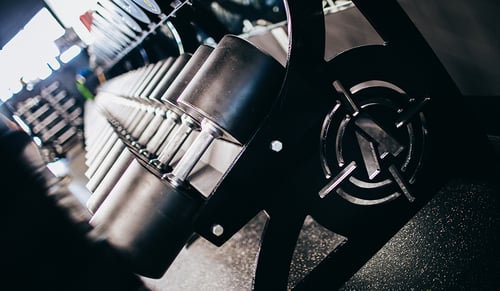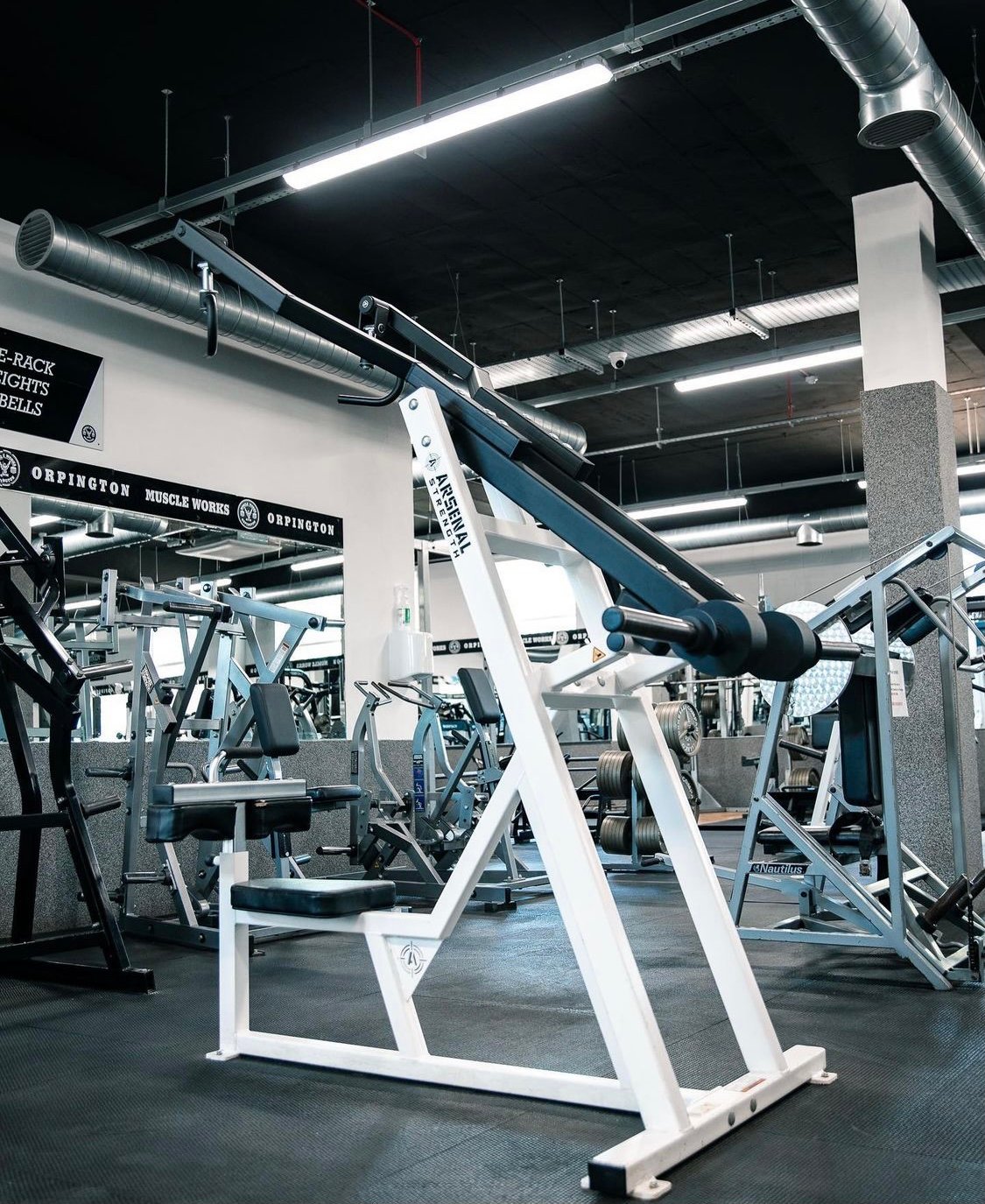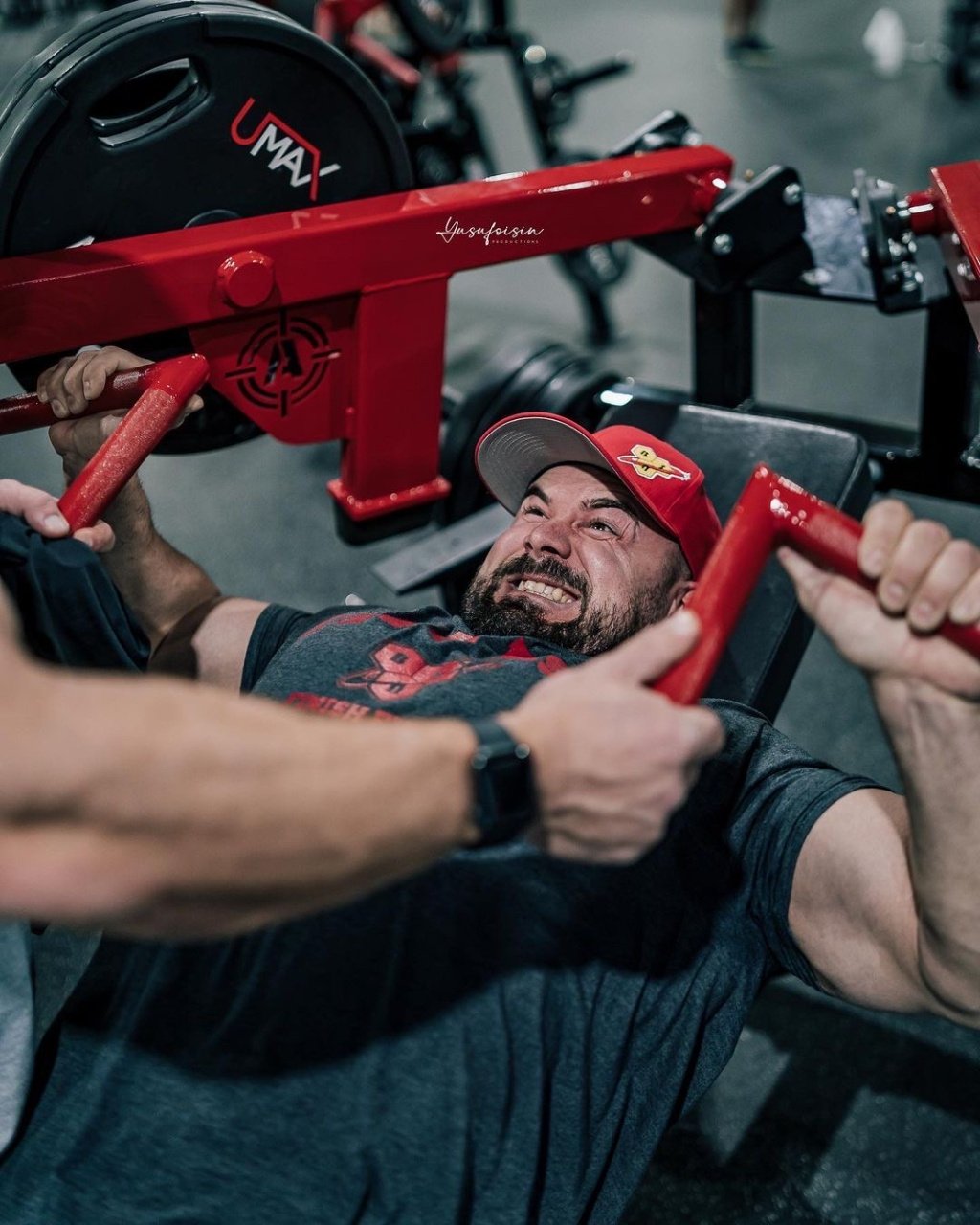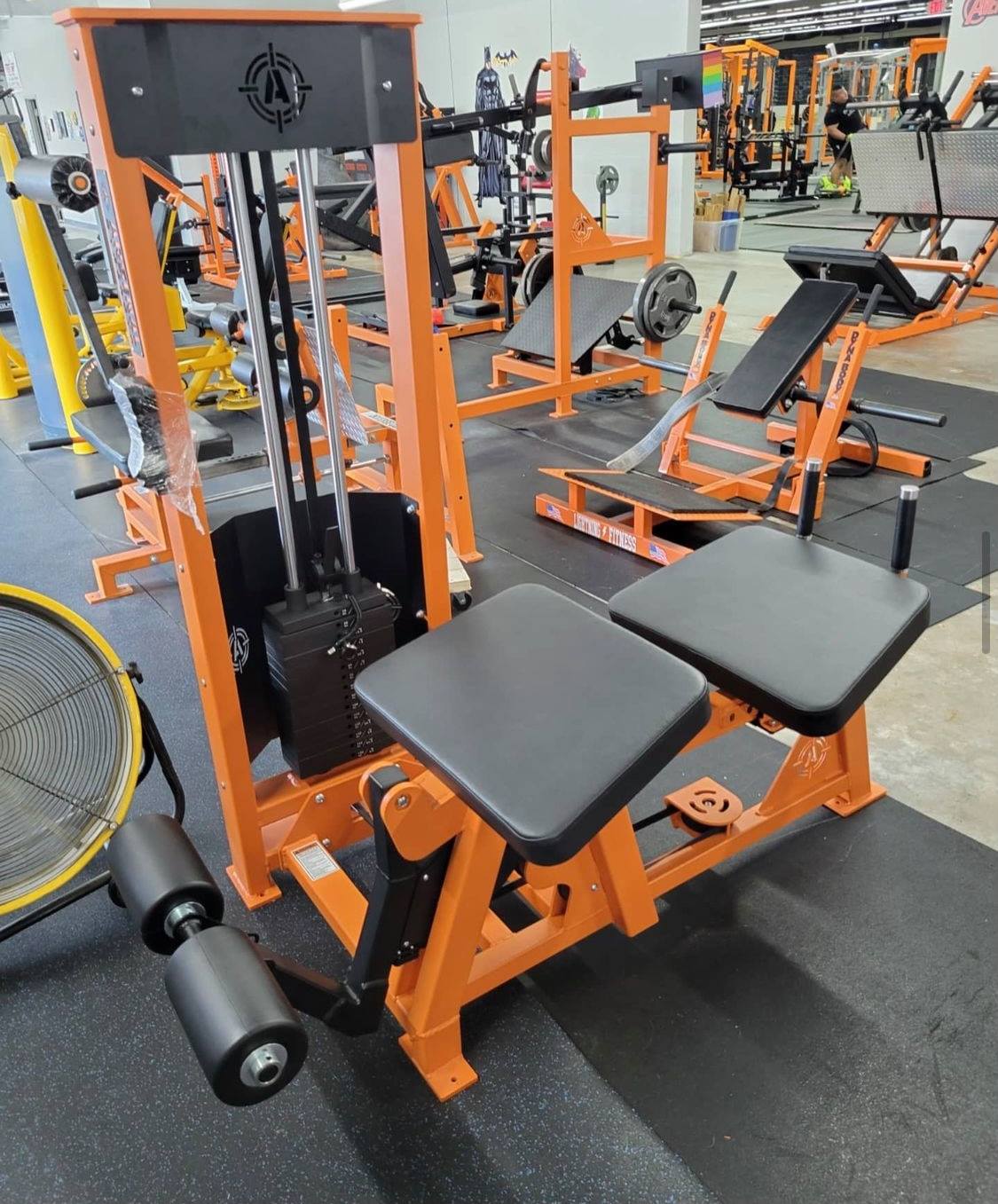Ultimate Guide To Choosing A Lat Pulldown Machine
Discover the best lat pulldown machine for your custom gym. In this article, we compare critical features and offer advice tailored to your specific space. Cut through the clutter of options and focus on what truly matters in a lat pulldown machine to strengthen your back and enhance your workouts.
Key Features to Consider When Selecting a Lat Pulldown Machine
Looking to beef up your gym with a lat pulldown machine? Here's the inside scoop on what to keep an eye out for to get the most bang for your workout buck. First off, adjustability is the name of the game. You want a machine that can adapt to your unique body type and fitness goals, transforming it from a simple low-row station into a versatile piece of your exercise puzzle.
Ever caught yourself staring at the different grip attachments on a lat pulldown machine and wondering if they're just for show? Think again—they're crucial for mixing up your routine and zeroing in on various muscle groups. Whether you're all about the wide grip for that wingspan or more into the narrow bars for a focused burn, each grip style is a game-changer for your workout intensity.
Now, let's chat about the bells and whistles—like adjustable pulley heights and seats. These aren't just fancy extras; they're essentials for making sure the machine fits everyone like a glove, from the tall folks who might feel cramped on a standard setup to those who prefer a more compact station.
The Lowdown on Build Quality
Got the features down? Great. Now let's talk construction. Your new workout buddy should be in it for the long haul, right? Look for lat pulldown machines that boast heavy-gauge steel frames—like the Body-Solid GLM83 Pro Lat Machine—which promise to stand firm even under the strain of your most intense sessions.
But don't just stop at the frame—the cables and pulleys are the heart and soul of the machine. Top-notch machines sport commercial-grade cables and pulleys that guarantee a smooth ride and longevity thanks to their robust pulley systems. So, when you're scrolling through options online, keep these details in mind before hitting 'buy.'
And here's a pro tip: A lifetime warranty isn't just marketing fluff; it's a badge of honor, showing the manufacturer's confidence in their equipment's ability to go the distance. So, if the price tag's a bit steep, remember that a solid warranty often reflects top-tier quality—and that's priceless when it comes to your home gym setup.
Plate-Loaded vs. Weight Stack Lat Pulldown Machines
Ever wondered about the difference between plate-loaded and weight stack lat pulldown machines? Well, buckle up because we’re about to go deep into the world of strength training equipment. Plate-loaded machines usually accommodate a weight capacity range of 300 to 500 pounds, whereas weight-stack machines commonly offer a weight range of 80 to 310 pounds. Depending on your strength training goals, one might be more suited to your needs.
Plate-loaded machines provide customizable resistance, similar to loading a barbell, and often have a 1:1 pulley ratio for consistent strength training. However, changing weights can be more time-consuming and requires additional space for weight plate storage. On the other hand, weight stack machines feature quick weight changes via a pin selection system, offering user-friendliness that is particularly beneficial for beginners.
Now, what if you want the best of both worlds? Well, hybrid machines combining weight stack and plate-loading features allow for tailored workouts, and selectorized machines sometimes use a 2:1 pulley ratio, altering the feel of the weight. So whether you’re a chest-pounding powerlifter or a newbie looking for a low-impact workout, there’s a lat pulldown machine that’s just right for you.
Standalone vs. Power Rack Attachments
Space is a precious commodity in most gyms, and choosing between a standalone lat pulldown machine and a power rack attachment can be a game of inches. Standalone machines are typically heavier and larger, providing increased stability and a specific area for performing lat-focused exercises. However, they may not be the best fit for a smaller home gym that is already jostling with other attachments.
Enter power rack attachments. These nifty add-ons conserve floor space by adding functionality to existing gym equipment without occupying extra room. However, they may be more limited in their weight capacity compared to their standalone counterparts, a factor to consider if you’re planning to pack on the pounds in your lat pulldown workouts.
So, whether you’re a standalone machine enthusiast or a power cage devotee, the choice between the two will depend on your available space, your workout needs, and, of course, your personal preference.

Benefits of Incorporating Lat Pulldowns into Your Workout Routine
Now that we’ve discussed the key features and types of lat pulldown machines, let’s explore the benefits of incorporating them into your workout routine.
Here are some benefits of lat pulldowns:
- Strengthening the latissimus dorsi muscle, the broadest muscle in the back, which is crucial for good posture and spinal stability
- Targeting the muscles in your upper back, shoulders, and arms
- Improving grip strength
- Enhancing overall upper body strength and muscle definition
Lat pulldowns are an excellent way to achieve these benefits!
But the benefits don’t stop there. Lat pulldowns enhance muscle symmetry by evenly targeting both sides of the back, helping to correct muscular imbalances. Plus, they mimic the pull-up movement, which can prove beneficial in various daily activities and sporting actions. So, not only will you be flexing those lats at the gym, but you’ll also be carrying those grocery bags with ease!
One of the greatest things about lat pulldowns is the ability to modify grip positions, such as:
- wide grip
- narrow grip
- pronated grip
- supinated grip
This allows for varied muscle engagement and enhances overall upper-body development. So, whether you’re a fitness newbie or a seasoned pro, lat pulldowns offer something for everyone.
How to Perform Proper Lat Pulldowns: Techniques and Tips
Now, let’s talk about how to perform proper lat pulldowns. It’s not just about pulling the bar down – there’s a technique to it! Here are the steps to follow:
- Start by sitting comfortably on the machine with your feet flat on the floor.
- Adjust the bar and thigh pad height as necessary to ensure a full range of motion.
- Choose the right amount of weight for your fitness level.
- Use the inside handle grips for a secure grip.
By following these steps, you can perform lat pulldowns correctly and effectively.
During the pull-down, it’s important to:
- Maintain square shoulders
- Squeeze the shoulder blades together
- Use the lats to draw the elbows down
- Grasp the bar with an overhand grip, knuckles facing upwards
- Pull the bar down to chin level
- Keep your upper torso stationary with feet flat and core engaged throughout the exercise.
Breathing is also an essential part of the exercise. Exhale as the weight is pulled down and inhale on the way back up, to help maintain form and effectiveness. And remember, avoid swinging or using momentum; instead, focus on a controlled movement, including a controlled return to the starting position.
With these techniques and tips, you’ll be a lat pulldown pro in no time!
Alternative Exercises Using Your Lat Pulldown Machine
While traditional lat pulldowns are fantastic, did you know your machine can do more? That’s right! With adjustable pulley heights and a selection of grip attachments, you can perform a diverse range of exercises beyond traditional lat pulldowns. Some exercises you can try include:
- Cable curls
- Tricep pushdowns
- Cable rows
- Face pulls
- Cable flyes
Talk about a functional trainer! This multifunctional trainer has it all.
One such exercise is the single-arm cable pulldown. This exercise targets specific muscle groups and adds a bit of variety to your workout routine. Half-kneeling single-arm pulldowns are another fantastic alternative exercise that you can perform using your lat pulldown machine, providing a different kind of challenge and engagement for your muscles.
Ever tried straight-arm pulldowns? By using a straight bar attachment set at shoulder height, you can engage the upper back and shoulder muscles, adding another layer to your workout routine.
So, next time you’re thinking about mixing things up, remember, your lat pulldown machine is more than just a one-trick pony!
Maintenance and Care for A Lat Pulldown Machine
Like any piece of gym equipment, your lat pulldown machine needs some TLC to keep it in top shape. Here are some maintenance tips:
- Regular cleaning with a damp cloth and mild detergent
- Wiping it down after each use to remove sweat and contaminants
- Lubricating guide rods and linear shafting with silicone to prevent chrome peeling and remove dirt and grime
Following these tips will help make sure that your lat pulldown machine stays in good condition.
It is also crucial to inspect the machine’s cables and pulleys for signs of wear and tear and replace any damaged parts immediately. Establishing a regular maintenance schedule to check all critical aspects of the lat pulldown machine can go a long way in ensuring its longevity.
Finally, storing the machine in a clean and dry environment can prevent rust and other forms of damage. Covering the machine when not in use and storing it in a controlled temperature and humidity environment can also help maintain its quality. With these maintenance and care tips, your lat pulldown machine will be pulling its weight for years to come.
Frequently Asked Questions
What is the difference between a lat pull-down and a LOW-ROW machine?
Depending on the muscle group you are planning to work, you may decide to use the row machine instead of a lat pulldown. Both can use a pulley system to operate the machine; the row machine uses a low pulley station to accomplish seated rows. Here are some videos showing the differences
Lat Pulldown Machines: https://www.youtube.com/watch?v=O94yEoGXtBY
vs.
Low Row Machine for Seated Rows: https://www.youtube.com/watch?v=UCXxvVItLoM
Is the lat PULL-DOWN machine suitable for beginners?
Yes, beginners can use the lat pulldowns. The machine allows for adjustable resistance and provides a controlled environment for learning proper form and technique.
How often should I include lat pull-downs in my workout routine?
The frequency of lat pull-downs will depend on your overall workout routine and goals. It is generally recommended to include them 1-2 times per week, along with other exercises that target your back and arms.
Can the lat PULL-DOWNS help me improve my posture?
Yes, the lat pulldown can be beneficial for improving posture. By strengthening the muscles in your back, it can help counteract the effects of slouching and promote better alignment.
Can I use different attachments on lat pull-down machines?
Yes, most lat pulldown machines offer a variety of other attachments, such as a V-bar or rope. These attachments can change the grip and angle of the exercise, allowing you to target different muscles.
Can lat pull-down machines help me build a wider back?
Yes, the lat pull down exercise can help build a wider back by targeting the latissimus dorsi muscles. However, it's important to note that genetics also play a role in determining the width of your back.
What other workouts can I do on this machine?
Though it's a champ at lat pulldowns, this nifty piece of equipment is versatile enough for a slew of other moves. Tricep pushdowns or bicep curls? No problem. Just remember to nail that form and technique for each new exercise you tackle.
PULL-UPS or lat pulldowns – which one should I go for?
Can't quite conquer the pull up bar? No sweat, the lat pulldown machine has got your back. While it's true that pull ups have the edge when it comes to range of motion and muscle engagement, mixing up your routine with both exercises will give you the best of both worlds.






